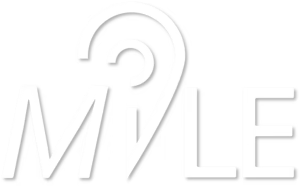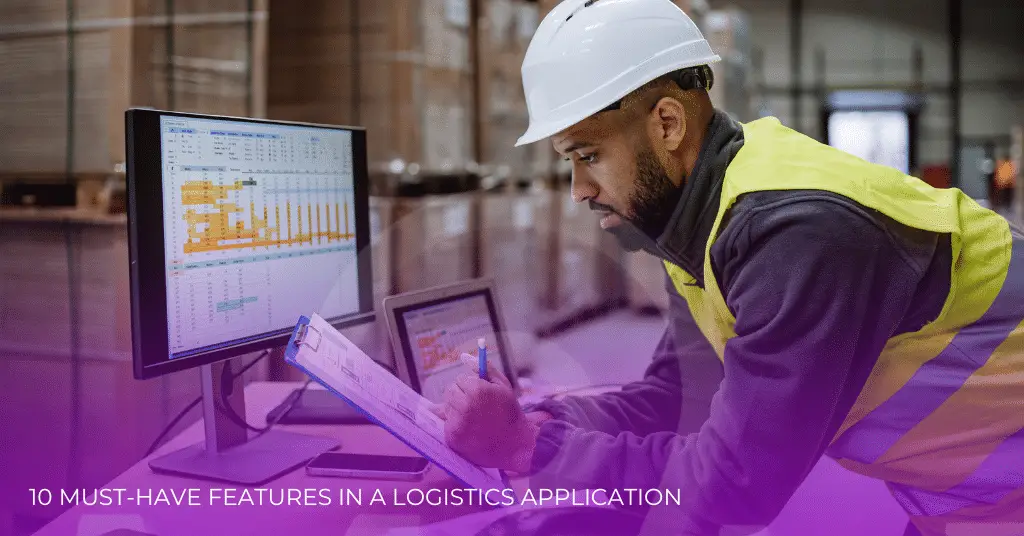تحتاج شركتك اللوجستية إلى تطبيق لوجستي لتبسيط سير عمل التسليم. تعرف على الميزات الرئيسية التي ستجعل تطبيقك ناجحًا عالميًا.
هل أنت مستعد لتحدي سريع؟
هل يمكنك سرد جميع المشاكل الرئيسية؟ مقدمي الخدمات اللوجستية لجهات خارجية (3PL) الوجه عندما لا يكون لديهم تطبيق لوجستي؟
دعنا نذهب!
- لا توجد رؤية في الوقت الحقيقي
- تخطيط الطريق غير فعال
- عدم القدرة على تعديل المسارات أثناء التنقل
- رحلات تسليم غير قابلة للتتبع
- إدارة السائق غير فعالة
- دليل إثبات التسليم
- عدم القدرة على التنبؤ بالطلب المستقبلي
هل تبدو مثل هذا الرمز التعبيري القلق الآن؟ هل تفكر في تطوير تطبيق لوجستي؟
واصل القراءة لمعرفة أهم عشر ميزات يجب تضمينها فيه.
10 ميزات أساسية يجب أن تتوفر في كل تطبيق لوجستي
1. لوحة تحكم إدارية واحدة متكاملة بالكامل
يتطلب مدير عمليات التسليم الخاص بك الحصول على نظرة عامة على جميع الطلبات وحالة إرسالها وتنفيذها وجمع الدفع وما إلى ذلك. ولكن ليس من الممكن لهم تتبع كل طلب يدويًا.
ستكون لوحة التحكم الإدارية القوية بمثابة أعينهم وآذانهم في الميدان. وستوفر لهم المعلومات الضرورية حول:
- الطلبات المعلقة
- الطلبات المنجزة
- الطلبات قيد التنفيذ
- الموقع الحالي للحزمة/السائق
- تفاصيل السائقين والتجار
- تحصيل الدفع
2. خطط رحلة السائق
إذا تُرِك الأمر لسائق التوصيل لاختيار مسار رحلته، فسوف يهدر الوقت والوقود. إن تنفيذ خطط رحلة السائق في تطبيق لوجستي يعالج هذه المشكلة من خلال تزويد السائقين بمسارات مخططة مسبقًا يحددها مدير عمليات التوصيل. تضمن هذه الميزة، إلى جانب تكامل نظام تحديد المواقع العالمي (GPS)، أن يتبع السائقون أقصر مسار، ويتجنبون حركة المرور، ويصلون إلى العنوان الصحيح بسرعة. عندما يحدد السائقون مساراتهم مسبقًا، يمكنهم بدء يوم عملهم على الفور وتسليم الطلبات في الوقت المحدد.
3. تحسين المسار في الوقت الفعلي
يجب أن يحتوي تطبيق الخدمات اللوجستية أيضًا على تحسين مسار التسليم في الوقت الفعلي ميزة تتيح للسائقين تحديث طرق التوصيل الخاصة بهم من خلال مراعاة ظروف المرور الحالية والطقس وإغلاق الطرق وغيرها من العوامل ذات الصلة. وهذا من شأنه أن يقلل من التأخير ويعزز كفاءة الوقود ويقصر أوقات التوصيل.
بالنسبة لأولئك الذين يستخدمون الدراجات الكهربائية، يجب أن ينبه النظام السائقين إذا كانت البطارية منخفضة ويعيد توجيههم تلقائيًا إلى أقرب محطة لتبديل البطارية. سيضمن هذا استمرار سير عمل التسليم دون انقطاع واستمرار التسليم في الموعد المحدد.
4. تقارير سجل الرحلة للمكتب الخلفي
تلتقط تقارير سجل الرحلة تفاصيل مهمة مثل معلومات الطريق، والطوابع الزمنية، والمسافة المقطوعة، وأي انحرافات عن المسار المخطط له. بالإضافة إلى ذلك، تقدم رؤى حول جوانب رئيسية مثل التوقفات التي تمت، واستهلاك الوقود، وسلوك السائق، وما إلى ذلك.
يمكن للمسؤولين استخدام هذه البيانات لتتبع وتقييم أداء السائقين، وتقييم كفاءة المسار، وضمان الالتزام بالجداول الزمنية. كما تعمل هذه الميزة على تعزيز الشفافية وتسمح بتحليل أفضل للعمليات، وبالتالي مساعدة مديري عمليات التوصيل على تحسين العمليات اللوجستية والحفاظ على معايير الخدمة العالية في جميع أنحاء الأسطول.
5. إدارة السائق
ال إدارة السائق توفر الوحدة رؤية شاملة لجميع السائقين وتمنح المسؤولين تحديثات في الوقت الفعلي حول حالاتهم.
تساعد هذه الميزة في لوحة الإدارة مديري عمليات التوصيل على تتبع مواقع السائقين الحالية وتوافرهم وأي مهام جارية. كما تقدم مقاييس أداء مفصلة، والتي تتضمن:
- عدد التسليمات المكتملة
- عدد التسليمات في الموعد المحدد
- معدل التسليم في المحاولة الأولى
- متوسط الوقت لكل تسليم
- أميال فارغة
- استغلال سعة المركبة
- دقة الطلب
- درجة المروج الصافي
في بعض برامج إدارة الخدمات اللوجستية، على سبيل المثال، ميلتدعم الوحدة أيضًا تحصيل الدفعات النقدية عند التسليم من خلال السماح للمسؤولين بتحديد حدود صارمة وناعمة للسائقين. وهذا يمنع سرقة السائقين والاحتيال. علاوة على ذلك، فإنه يدير أرباح السائقين وعمولاتهم، لذلك لا داعي للقلق بشأن اختلافات الرواتب كل شهر. بالإضافة إلى ذلك، تعمل الوحدة على تبسيط إدارة المناوبات من خلال تتبع الحضور وأوقات العمل من خلال منصة سهلة الاستخدام، مما يجعل إدارة السائقين أسهل وأسرع.
6. إثبات التسليم الإلكتروني
يتضمن إثبات التسليم الورقي التقليدي الحصول فعليًا على توقيع العميل على مستند في موقع التسليم. هذه العملية تستغرق وقتًا طويلاً وعرضة للأخطاء.
ونتيجة لذلك، يتبنى معظم مقدمي الخدمات اللوجستية من جهات خارجية الآن برامج إثبات التسليم الإلكترونية لتبسيط عملية توثيق التسليم والحد من الأخطاء. ومع ذلك، هذا ليس ضروريًا دائمًا، حيث إن بعض حلول برامج الخدمات اللوجستية، مثل Mile، تحتوي على هذه الميزة. على سبيل المثال، يمكن لسائقي التوصيل الذين يستخدمون تطبيق الخدمات اللوجستية الخاص بـ Mile التقاط توقيعات العملاء رقميًا، والتي يتم تحديثها على الفور في قاعدة البيانات. في الحالات التي لا يكون فيها العميل متاحًا لتلقي الطرد شخصيًا أو طلب تسليمًا بدون تلامس، يمكن للسائقين التقاط صورة للطرد في موقع العميل وتحميلها على التطبيق. ثم يتم إرسال هذه الصور تلقائيًا إلى العميل عبر الرسائل القصيرة أو البريد الإلكتروني لتوثيق التسليم الناجح. والأهم من ذلك، يحدث كل هذا مع طوابع الوقت والتاريخ والموقع.
سواء اخترت تطوير تطبيقات الجوال المخصصة أو قم بشراء اشتراك SaaS للخدمات اللوجستية، حيث يعد إثبات التسليم الإلكتروني ميزة رائعة يجب أن تتمتع بها.
7. تحليلات البيانات التنبؤية
لا شك أن تحليلات البيانات التنبؤية قد غيرت عمليات تسليم الشحنات، وإلى الأفضل!
يقوم بتحليل الاتجاهات التاريخية وتواريخ الطلبات للتنبؤ بالطلب المستقبلي بدقة. ومن خلال القيام بذلك، فإنه يمكّن الشركات من جذب عملاء جدد، وزيادة المبيعات للعملاء الحاليين، وتعزيز ولاء العملاء. علاوة على ذلك، فإنه يوفر رؤى عميقة حول سلوكيات العملاء وتفضيلاتهم، والتي يمكن لشركات الخدمات اللوجستية الخارجية الاستفادة منها لجذب عملاء جدد، وزيادة المبيعات للعملاء الحاليين، وتخصيص العروض لتعزيز ولاء العملاء.
ومع ذلك، فإن القوة التحويلية الحقيقية لهذه التحليلات تكمن في استخدامها في وضع قواعد الإرسال التي تعتمد على الذكاء الاصطناعي، والتي تعمل على تكوين المناطق الداخلية والخارجية وأتمتة المهام بناءً على المسافة وسعة المركبة وحجم الطلب وحدود التسليم عند التسليم والعديد من العوامل الأخرى. تساعد هذه الميزة شركات الخدمات اللوجستية الخارجية على تحسين كفاءة الأسطول وتبسيط عمليات التسليم من خلال ضمان مطابقة الوظائف المناسبة مع الموظفين المناسبين.
ميزات رئيسية أخرى يمكنك أخذها في الاعتبار
8. الوضع غير المتصل بالإنترنت
ماذا لو فقد سائق التوصيل اتصاله بالإنترنت أثناء توجهه إلى موقع العميل؟ باستخدام تطبيق لوجستي غير متصل بالإنترنت، لا يزال بإمكان السائق التقاط التوقيعات أو إثباتات الصور الخاصة بالتسليم ومواصلة مساره. سيحتفظ التطبيق بهذه الملفات في قائمة انتظار ويقوم بتحميلها تلقائيًا بمجرد توفر اتصال مستقر.
9. واجهة مستخدم محلية
قد تقتصر عملياتك اللوجستية حاليًا على بلدك. ولكنك قد ترغب قريبًا في توسيع نطاق عملك إلى الأسواق الأجنبية. إذا كان الأمر كذلك، فيجب عليك إنشاء تطبيقك اللوجستي مع وضع المستخدمين العالميين في الاعتبار. على الرغم من انتشار اللغة الإنجليزية على نطاق واسع في العالم، إلا أن نسبة كبيرة من سكان العالم يفضلون إجراء الأعمال بلغتهم الأم.
لذلك، يجب أن يكون تطبيقك اللوجستي قابلاً للتخصيص للغات وسياقات ثقافية متعددة. ويجب أن يتجاوز هذا التكيف الترجمة الأساسية ويتضمن توطين الرموز والتاريخ والأوقات عبر جميع الوحدات. وبصرف النظر عن جعل الحل الخاص بك بديهيًا وسهل الاستخدام لجمهور عالمي، فإن الواجهة متعددة اللغات ستسمح لشركتك بالتغلب على الحواجز اللغوية وضمان شعور جميع أصحاب المصلحة الدوليين بالراحة والفهم.
10. التقييمات والمراجعات
عندما يقدم المستخدمون تقييمات ومراجعات للخدمات المقدمة، فإن هذا لا يساعد العملاء المستقبليين على تقييم جودة هذه الخدمات واتخاذ قرارات أفضل فحسب، بل إنه يدفع أيضًا إلى تحسينات مستمرة من جانب شركات الخدمات اللوجستية. فهي تسعى باستمرار إلى ضبط التطبيق أو عمليات الخدمة المحددة لتحسين تجربة المستخدم بشكل عام.
اختتام
أفضل ما في وجود تطبيق لوجستي هو أن كل من يشارك في عملية التسليم (موظف المستودعات، وموظفي المكتب الخلفي، وسائقي التسليم) لديهم إمكانية الوصول إلى مسار تسليم رقمي مع طوابع زمنية ودبابيس موقع من بداية رحلة السائق حتى نهاية اليوم. لن يضطر فريقك بعد الآن إلى القيام بالمهمة الشاقة المتمثلة في التعامل مع عمليات التسليم يدويًا وتقديم أدلة ورقية.
ميلز الخدمات اللوجستية SaaS يحتوي على جميع الميزات المذكورة أعلاه وأكثر من ذلك، لمساعدتك على تبسيط وأتمتة كل جانب تقريبًا من جوانب سير عمل التسليم.
جدولة عرض توضيحي اليوم للتعرف على المزيد حول قدراته ومعرفة كيفية تعزيز عملياتك.

